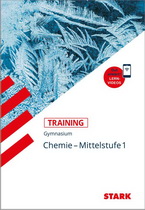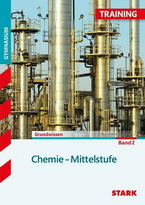Herstellung von Laugen:
Grundregel:
Metall + Sauerstoff  Metalloxid Metalloxid
Metalloxid + Wasser  Lauge Lauge |
Die wichtigsten Beispiele:
Natronlauge
Natrium + Sauerstoff  Natriumoxid Natriumoxid
4 Na + O2  2 Na2O 2 Na2O
Natriumoxid + Wasser  Natronlauge Natronlauge
Na2O + H2O  2 NaOH 2 NaOH
|
|
Kalilauge
Kalium + Sauerstoff  Kaliumoxid Kaliumoxid
4 K + O2  2 K2O 2 K2O
Kaliumoxid + Wasser  Kalilauge Kalilauge
K2O + H2O  2 KOH 2 KOH
|
|
Kalkwasser :
Calcium + Sauerstoff  Calciumoxid Calciumoxid
2 Ca + O2  2
Ca O 2
Ca O
Calciumoxid + Wasser  Kalkwasser Kalkwasser
CaO + H2O  Ca(OH)2 Ca(OH)2
|
|

 |
Chemie
Mittelstufe 1 |
| Gymnasium |
Chemie Mittelstufe
Themengebiete:
 |
Chemie
Mittelstufe Bd.2 |
| Gymnasium |
| - |
Säure-Base-Reaktionen |
| - |
Redoxreaktionen, |
| - |
Kohlenwasserstoffe, |
| - |
sauerstoffhaltige organische Verbindungen und Biomoleküle |
|

